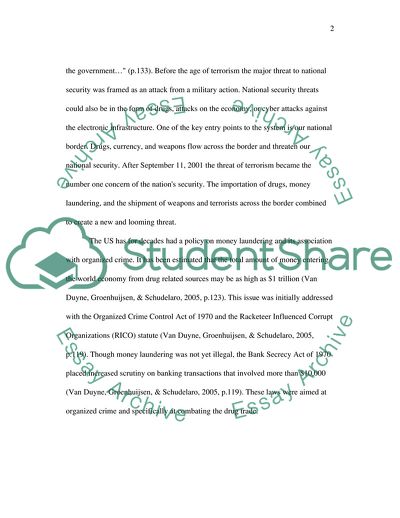Cite this document
(Money Laundering and Smuggling: Border Control and National Security Essay, n.d.)
Money Laundering and Smuggling: Border Control and National Security Essay. https://studentshare.org/people/1711109-analyzing-the-effects-of-money-laundeering-and-smuggling-into-the-united-states-focusing-on-border-security-of-the-country
Money Laundering and Smuggling: Border Control and National Security Essay. https://studentshare.org/people/1711109-analyzing-the-effects-of-money-laundeering-and-smuggling-into-the-united-states-focusing-on-border-security-of-the-country
(Money Laundering and Smuggling: Border Control and National Security Essay)
Money Laundering and Smuggling: Border Control and National Security Essay. https://studentshare.org/people/1711109-analyzing-the-effects-of-money-laundeering-and-smuggling-into-the-united-states-focusing-on-border-security-of-the-country.
Money Laundering and Smuggling: Border Control and National Security Essay. https://studentshare.org/people/1711109-analyzing-the-effects-of-money-laundeering-and-smuggling-into-the-united-states-focusing-on-border-security-of-the-country.
“Money Laundering and Smuggling: Border Control and National Security Essay”. https://studentshare.org/people/1711109-analyzing-the-effects-of-money-laundeering-and-smuggling-into-the-united-states-focusing-on-border-security-of-the-country.


